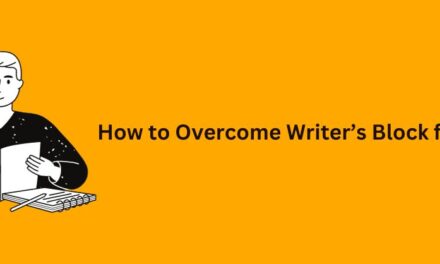How to Finish What You Start with Consistent Practice

We all get those flashes of inspiration. A melody pops into your head. A powerful image comes to you in the shower. A phrase or metaphor captures an emotion perfectly.
These sparks of creativity are gifts – but what do we do with them? How can we fan these small flames into a raging fire of creativity and turn our visions into finished works of art?
The Creative Spark: Transform Inspiration into Artistic Mastery
I’ve spoken to hundreds of successful artists, musicians, writers, and innovators about their creative process. While everyone has their own unique path, some common themes emerged.
In this article, I’ll share the key mindsets and practical strategies used by the masters to transform inspiration into artistic mastery. If you feel stuck or overwhelmed trying to turn your ideas into reality, this guide will reignite your creative spark and show you how to complete your magnum opus.
Quieting Your Inner Critic
The first step is learning to quiet that nagging inner critic. You know the one – that voice telling you that your ideas aren’t original enough or you’re not skilled enough to succeed. This sabotaging self-talk keeps many of us from even trying to create something new.
Silencing your inner critic takes practice, but gets easier over time. Here are some proven techniques:
- Set a finite time to brainstorm without judging yourself. Let the ideas flow without censorship first, evaluate later.
- Imagine your inner critic is an external person. Give them a silly name like “Mr. Doubty” and picture putting duct tape over their mouth!
- Instead of focusing on flaws in your work, purposefully look for what you did well. Train yourself to be more encouraging.
- Perfectionism kills creativity. Done is better than perfect. Not everything you make needs to be a masterpiece.
- Reframe criticism as helpful feedback to improve, not a personal attack on your abilities.
The more you consciously rewire your self-talk, the less power your inner critic will have over you. With your harshest critic out of the way, let’s move on to capturing those creative sparks before they disappear!
Seizing Your Inspiration
Inspiration is fleeting – you’ve got to grab it before it’s gone! Make it easy for yourself to record ideas whenever they strike.
Here are some ways successful creatives immediately capture inspiration:
- Carry a small notebook or voice recorder with you at all times. Technology makes it easy to take your studio anywhere!
- Keep an idea file. One writer I spoke to puts all brainstorming free writes, lyrics, observations and inspiring quotes into a big file to mine later.
- Have your tools ready to work. A painter might set up their supplies in advance so they can jump straight into painting when an image pops in their head.
- Drop what you’re doing and work on capturing the idea right away. Inspiration doesn’t always come when it’s convenient, but it’s usually worth the interruption!
- Set reminders and designate time for brainstorming. Inspiration won’t always come to you – you have to seek it out by making space to play and experiment.
Don’t wait for perfect conditions to be creative either. As artist Chuck Close said, “Inspiration is for amateurs — the rest of us just show up and get to work.”
Show up with your tools ready, seize those ideas when they come, and then get to work expanding them!
Expanding the Initial Spark
Okay, so you’ve captured that initial creative spark before it disappeared. Now what? Too often we stop there, convinced the seed of inspiration alone isn’t enough. But masters know creativity is a process of growing, shaping, and expanding on ideas.
The initial spark contains the seed of something amazing. You just need to nurture it.
Here are tips for stretching your inspiration into a finished work:
- Treat every new idea as an experiment. Free yourself from expectations and play without overthinking it.
- Improvise around the idea. Try it different ways, change the timing, mix up the medium. Happy accidents often happen when you’re loose.
- Take time to reflect after initial brainstorming writes, jams, or sketching. Let the idea marinate then revisit it with fresh eyes.
- Research and gather material related to the idea. Immerse yourself in what’s been done before to expand your concept.
- Combine ideas that seem unrelated at first. For example, an artist painting space could look to outer space photographs and Renaissance portraits to blend ideas.
- Talk it out with others. Getting feedback and riffing with others expands your solo idea into a collaborative one!
- Set milestones and deadlines to finish the project, even if arbitrary. Don’t let perfectionism delay you indefinitely.
Let the initial spark grow into a flame by surrounding it with related “fuel” and giving yourself space for unstructured play. Now we’re getting somewhere! Next we need to organize and refine the idea into its final form.
Imposing Structure and Making Refinements
You’ve generated lots of ideas, snippets of writing, experimental sketches, melodic phrases. Now what? This is where the molding and crafting begins.
Successful creatives take their raw material and start shaping it towards a final product by:
- Organizing related material together. Group any repetitions and reorder disjointed bits into coherent sections.
- Finding the narrative thread that ties it all together. What’s the essence of what you’re trying to say or create?
- Filling in any gaps so it makes sense end to end. You don’t need to keep every piece you brainstormed.
- Refining the style, tempo, voice until it feels cohesive. It helps to limit your palette of options.
- Capturing the emotion you want to convey. What experience do you want the audience to have? Let that guide you.
- Paring it down to the strongest parts. Kill your darlings! Editing out weaker bits makes the good parts shine.
- Considering the audience experience from start to end. Tweak details to maximize impact.
- Getting outside opinions from trusted sources. Fresh eyes notice gaps in logic you may miss.
- Repeating the process until everything flows together naturally. Don’t rush the refinement stage.
It can be tempting to call it “done enough” when frustration sets in. But extra refinement is what takes a piece from good to incredible. Masterpieces aren’t created overnight. Stay patient, keep refining, and constantly evaluate against your original vision.
Executing the Final Product
We’ve followed the creative process from inspiration to fully formed idea. The final step is execution – actually finishing the dang thing!
Here are some tips for powering through the execution stage:
- Work consistently in blocks of time without interruption. Make regular time for creating, even if you can only spare an hour.
- Tell friends and family your creation time is sacred. Guard it jealously from distractions.
- Make a checklist of tasks and cross them off one by one. Seeing progress builds momentum.
- When you hit a roadblock, take a break and come back to it fresh. Frustration breeds creative blocks.
- Celebrate small milestones along the way. Enjoy the process, not just the final outcome.
- Stay focused on consistency. A little bit daily is better than marathon sessions every few weeks.
- Keep your vision firmly in mind during final execution. Straying causes regret later.
- Don’t stop 5% before completion to polish. Get the raw idea fleshed out first.
- Mark it finished even if it’s not perfect. You can always create another version later.
Finish that first draft, composition, iteration. Don’t let the inner critic convince you it’s not ready yet. Done gives you critical feedback to improve next time. The more creations you finish, the better you become.
Overcoming Creative Blocks Along the Way
Alas, the creative process doesn’t always move smoothly from start to finish. All artists experience creative blocks at times that stall progress.
Here are some proven techniques to overcome those pesky blocks:
- Take a break and shift to a different task. Let your subconscious work in the background.
- Do some form of exercise and clear your mind. Go for a walk or do yoga.
- Take scheduled time off to recharge. For big projects, plan short vacations to come back refreshed.
- Try an unrelated creative activity like cooking, gardening or crafting to stimulate fresh connections.
- Read poetry or consume art in the same medium you’re creating in. Find inspiration from masters.
- Make lists of project tasks with deadlines to motivate you when stuck.
- Talk through your vision with someone else enthusiastic about your project. Their energy is contagious!
- If totally burnt out, pause and work on something new in the meanwhile. Come back with renewed passion later.
Rather than fighting blocks with sheer willpower, work around them creatively. Detours often lead to happy surprises that reinvigorate your process.
Putting in the Time for Mastery
Here’s an empowering truth – consistent practice over time inevitably leads to mastery. While passion is crucial, you also must invest the hours. Great works don’t happen overnight.
Pyotr Ilyich Tchaikovsky said it well: “Do not believe those who try to persuade you that composition is only a cold exercise of the intellect. The only music capable of moving and touching us is that which flows from the depths of a composer’s soul when he is stirred by inspiration.”
Inspiration provides the initial spark, but mastery emerges through dedicated practice.
Malcolm Gladwell’s popular “10,000 hour rule” emphasizes the role of time investment, based on research that mastery in a skill takes about 10,000 hours of practice. While the exact number varies by skill and person, the underlying truth remains – persistent practice is key. Many successful creators schedule consistent time for their craft, like author Haruki Murakami’s six hour per day routine.
Carve out the time and stay patient. Your skills will grow exponentially.
Perhaps most encouraging, creativity begets more creativity. The more you create, the more ideas seem to flow. Regularly exercising your creative “muscles” keeps them strong and nimble. Inspiration strikes more often. Excuses like “I don’t have any good ideas” stop popping up. Momentum builds and everything becomes more effortless.
So silence your inner critic, seize inspiration when it strikes, refine your execution process – then commit to regular practice. That’s how the masters turn creative sparks into soaring bonfires of innovation. Now it’s your turn. Your opus is waiting!
















